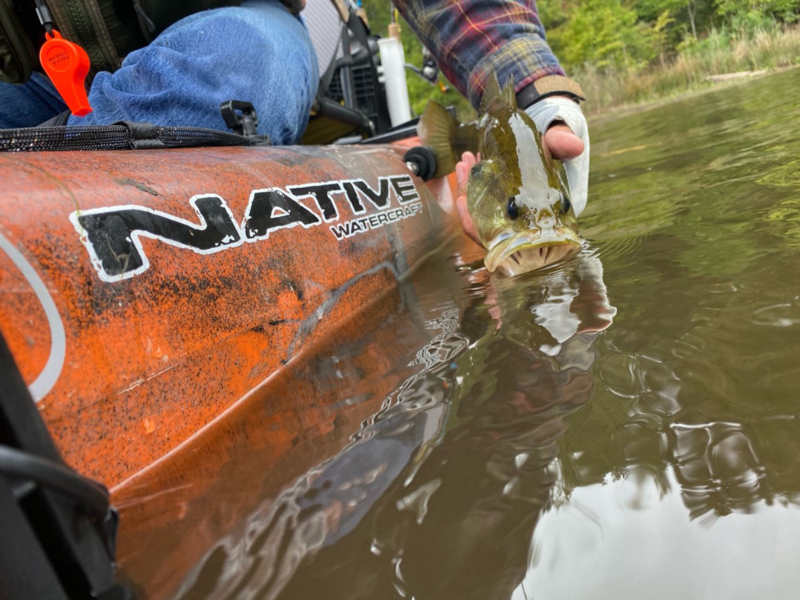When I gather my gear to head out on my kayak for some spring largemouth bass fishing, I take a few surefire baits with me. But before we get to the subject of baits, a few words about tackle. I use both bait cast and spinning gear, and the baits we’ll talk about here are easy to cast with either set up. There isn’t a need to overthink the gear you use, it’s only important to feel comfortable and confident with it. I rig up four fishing rods with 10- or 15-pound braid with a six-foot-long leader of eight- or 10-pound fluorocarbon.

Tip: To save cost on leader material I don’t buy line advertised as leader material. Instead I buy a bulk spool of fluorocarbon line. I can make a lot of leaders out of a spool of line.
On one of my fishing rods I have a wacky rig bait, often a five-inch watermelon (green/white) colored worm. I don’t use an O-ring though, I just hook the worm, because if you cast shallow and happen on a big bluegill, they will steal the worm easier with an O-ring than without one.
Find the center of the worm and then thread the hook through just a little toward one end of the bait. I find that if I hook the worm off-center it will sink faster than if I hook in the direct center. I use this set up if I’m fishing water over grass beds in water four feet or deeper. If I’m throwing a wacky rig along the shoreline, I hook the worm in the direct center to give it a slower descent and more action.
After casting twitch your rod tip ever so lightly as the worm sinks. Along the shoreline cast under trees, next to laydown trees, and around stumps. In deeper water try casting over submerged grass.
On my second fishing rod I like to have a mid-sized square billed crankbait. Crawdad colored baits work well, but in stained water try throwing slightly more orange colored baits. Cast this offering across points, over riprap, parallel to laydowns, over top of grass beds, and through stump fields.
Tip: Try using square billed crankbaits with single inline hooks. I find I get fewer snags and that I don’t lose more fish than if I were using treble hooks, and using inline hooks harms fewer fish.
On my third fishing rod I tie on a quarter-ounce jig with a four-inch paddle tail. This lure can be cast in all the same locations as the crankbait and wacky rig. The advantage, however, is that you can either retrieve the bait right under the surface, suspended in the water column, or right along or off the bottom.
Tip: Try trolling this bait between locations when moving around a lake — I catch a lot of bass using this technique.
On my fourth rod I tie on a medium sized spinnerbait. I like to cast this lure across flats, tossing it near the shoreline and working it back in a steady and slow retrieve. You can fan-cast the bait across the flats, too, and at times stop the retrieve to allow the spinnerbait to sink slightly. Sometimes this will generate a bite. I will cast a spinner bait along laydowns, through stump fields, and grass beds, too.
Tip: If I’m having a slow day or not catching, I tie on a Beetle Spin with a white plastic twister tail. Believe me when I say, this little spinnerbait catches fish!
Of all these standard spring bass lures the wacky rig is by far my favorite, because I catch more fish with it. The other three are important to keep handy, though, to use when you run across the various structures mentioned.
Last tip: Water temperature, wind, and depth of water all play into how bass are feeding. Work your bait back to the kayak at various speeds until you find one that works for the conditions of the day.
-By Eric Packard